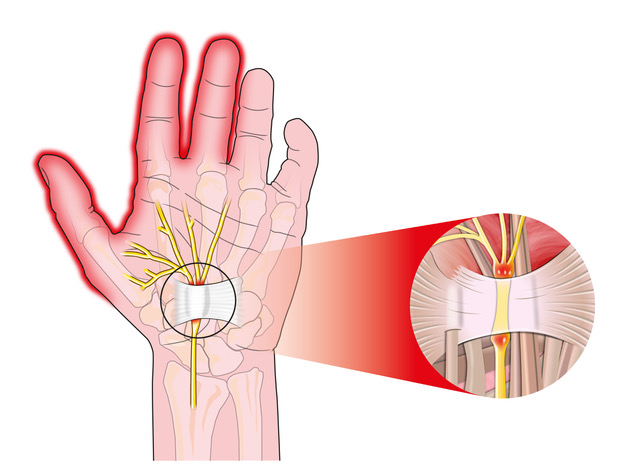
When it comes to pain associated with carpal tunnel syndrome and rheumatoid arthritis, it can be difficult to distinguish the difference between the two. Many people experience pain in their hands and wrists, but are unsure which is the culprit. Let’s take a look at what both carpal tunnel syndrome and rheumatoid arthritis are all about and the difference in the pain associated with each one.
Carpal Tunnel Syndrome
A frustrating medical condition that millions of people suffer from in this country is known as carpal tunnel syndrome. This painful condition can cause you to struggle with normal activities that require the use of your hands. In some cases, your hands and fingers may not function properly.
If you are suffering from carpal tunnel syndrome, you will often experience tingling, pain, weakness, numbness, and other symptoms in your hands and wrists only. This is a result of pressure that is placed on the median nerve in the wrist. The median nerve has several different tendons, including a carpal tunnel that leads from the wrist to the hand. When pressure is placed on this area of the nerve, the thumb and first three fingers of the hand cannot function properly.
Often, people will complain of tingling and numbness in the hand. Activities such as holding a phone or using a steering wheel will create the tingling sensation. This sensation has been known to cause people to drop things they are holding and even wake them from sleeping. The progression of carpal tunnel syndrome is gradual. The tingling and numbness may come and go to start, but will eventually become constant.
There are many things that can cause carpal tunnel syndrome. These include things like continually performing the same motion over and over again, pregnancy, diabetes, hypothyroidism and even rheumatoid arthritis.
Treatment for carpal tunnel syndrome can be simple or serious. You might find relief from icing the injured area, using nonsteroidal anti-inflammatory drugs, wearing a splint on your wrist and making sure to stop doing the activities that aggravate the pain. Resting your wrist is also important. When the pain becomes bad enough that it prevents you from performing daily activities, then surgery becomes an option. It is important to get a diagnosis and treatment as soon as possible.

What is Rheumatoid Arthritis?
Rheumatoid arthritis or RA, is actually an autoimmune disorder associated with chronic inflammation of the joints. Typically, RA affects your smaller joints in your hands and feet. The pain you feel with RA comes from your own immune system attacking your body’s tissue. This causes pain, stiffness and swelling in the lining of your joints. You may feel sick, tired and suffer from fevers if you are experiencing RA.
There are many specific symptoms indicative of RA. These may include: stiffness in the morning that can last for hours, swollen joints, tender joints, firm bumps of tissue under the skin of your arms, fever, fatigue and weight loss. RA can affect any and all of your joints, but typically starts with the smaller joints in your hands and feet.
The cause of RA can be difficult to determine. Anybody is subject to the disease, but doctors are not entirely able to pinpoint the root of RA. Likely, RA is caused by genetics, the environment or hormones.
Unfortunately there is no cure for RA. Treatment of RA might include drugs like nonsteroidal anti-inflammatories, steroids, antirheumatic drugs and biological agents. Other treatment options include therapy, surgery and alternative medicine. Once again, getting an early diagnosis can lead to quicker treatment and relief.
As you can see, carpal tunnel syndrome and RA have similarities, but they also have distinct differences. They both cause pain and tenderness in your hand and RA can actually lead to carpal tunnel syndrome. An important difference is that if you are suffering from RA, you will have pain in other joints of your body other than your hand. Pain from carpal tunnel syndrome is particularly distinctive in that your pinky finger will be less painful than the rest of your fingers, repetitive motion will make the pain more noticeable and it extends up your forearm.
It is also important to note that pain in your hand may not be caused by either carpal tunnel syndrome or RA. Pain in your hand or wrist could just be the result of an injury to the tendon, ligament, bone or even a nerve problem. If you are experiencing pain in your hand or wrist, you should always have it examined by a trusted medical professional for a proper diagnosis and treatment plan.
In the end, both carpal tunnel syndrome and rheumatoid arthritis do get confused for one another and it is easy to see why. They both cause uncomfortable pain in your hand and or wrist. Having a medical professional diagnose your pain is essential for receiving the proper medical treatment and having the best outcome.
Comments are closed.
